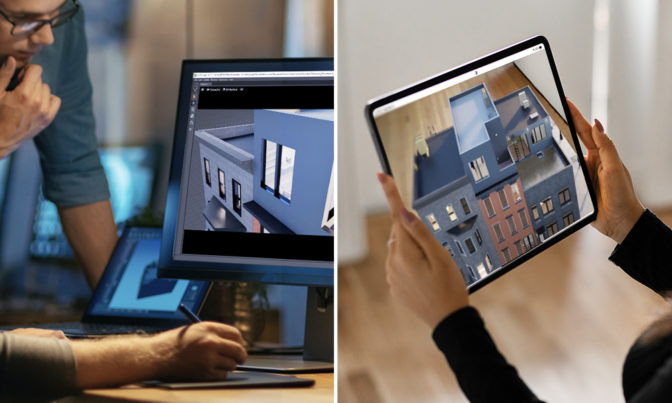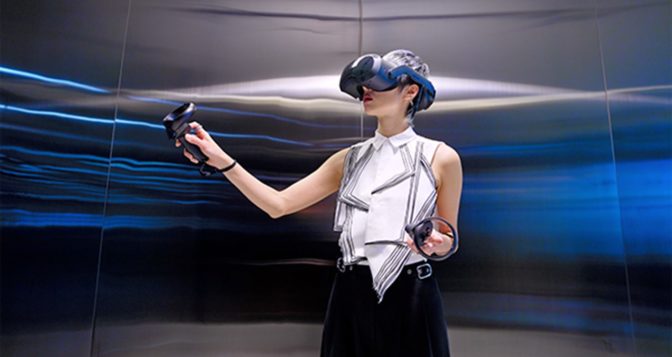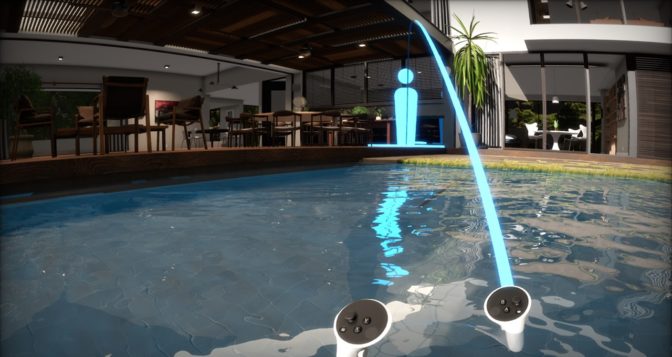Advances in prolonged actuality have already modified the way in which we work, dwell and play, and it’s simply getting began.
Prolonged actuality, or XR, is an umbrella class that covers a spectrum of newer, immersive applied sciences, together with digital actuality, augmented actuality and blended actuality.
From gaming to digital manufacturing to product design, XR has enabled folks to create, collaborate and discover in computer-generated environments like by no means earlier than.
What Is Prolonged Actuality?
Digital, augmented and blended actuality are all parts of XR know-how.
Digital actuality places customers inside a digital atmosphere. VR customers sometimes put on a headset that transports them right into a digital world — one second they’re standing in a bodily room, and the subsequent they’re immersed in a simulated atmosphere.
The most recent VR applied sciences push these boundaries, making these environments look and behave extra like the true world. They’re additionally including help for extra senses, together with contact, sound and scent.
With VR, avid gamers can develop into totally immersed in a online game, designers and prospects can evaluate constructing initiatives to finalize particulars previous to development, and retailers can check digital shows earlier than committing to a bodily one.
Augmented actuality is when a rendered picture is overlaid onto the true world. The cellular sport Pokémon GO famously introduced AR to the mainstream by displaying computer-rendered monsters standing on lawns and sidewalks as gamers roam their neighborhoods.
AR graphics are seen by means of cell telephones, tablets and different gadgets, bringing a brand new type of interactive expertise to customers. Navigating instructions, for instance, may be improved with AR. Quite than following a 2D map, a windshield can superimpose instructions over one’s view of the highway, with simulated arrows directing the driving force precisely the place to show.
Blended actuality is a seamless integration of the true world and rendered graphics, which creates an atmosphere wherein customers can immediately work together with the digital and bodily worlds collectively.
With MR, actual and digital objects mix, and are introduced collectively inside a single show. Customers can expertise MR environments by means of a headset, telephone or pill, and might work together with digital objects by shifting them round or inserting them within the bodily world.
There are two varieties of MR:
- Mixing digital objects into the true world — as an illustration, the place a person sees the true world by means of cameras in a VR headset with digital objects seamlessly blended into the view.
- Mixing real-world objects into digital worlds — for instance, a digital camera view of a VR participant blended into the digital world, like watching a VR gamer taking part in in a digital world.
The Historical past of XR
To grasp how far XR has come, contemplate its origins in VR.
VR started within the federal sector, the place it was used to coach folks in flight simulators. The power and automotive design industries had been additionally early adopters. These simulation and visualization VR use circumstances required massive supercomputers. It additionally wanted devoted areas, together with powerwalls, that are ultra-high-resolution shows, and VR CAVEs, that are empty rooms which have the VR atmosphere projected on every floor, from the partitions to the ceiling.
For many years, VR remained unaffordable for many customers, and the small VR ecosystem was primarily composed of huge establishments and educational researchers.
However early within the earlier decade, a number of key element applied sciences reached a tipping level, which precipitated the launch of the HTC Vive and Oculus Rift head-mounted shows (HMDs), together with the SteamVR runtime.
People may now buy private HMDs to expertise nice immersive content material. And so they may drive these HMDs and experiences from a person PC or workstation with a strong GPU.
All of a sudden, VR was accessible to hundreds of thousands of people, and a big ecosystem shortly sprung up, crammed with innovation and enthusiasm.
In recent times, a brand new wave of VR innovation began with the launch of all-in-one (AIO) headsets. Beforehand, totally immersive VR experiences required a bodily connection to a strong PC. The HMD couldn’t function as a self-contained gadget, because it had no working system and no potential to compute the picture.
However with AIO headsets, customers gained entry to a devoted gadget with a easy setup that would ship totally tracked VR wherever, anytime. Coupled with the innovation of VR streaming know-how, customers may now expertise highly effective VR environments, even whereas on the go.
Newest Traits in XR
Excessive-quality XR is changing into more and more accessible. Customers worldwide are buying AIOs to expertise XR, from immersive gaming to distant studying to digital coaching. Giant enterprises are including XR into their workflows and design processes. XR drastically improves design implementation with the inclusion of a digital twin.
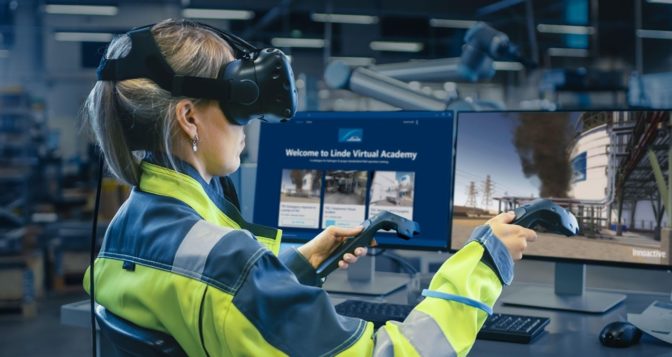
And one among at the moment’s largest tendencies is streaming XR experiences by means of 5G from the cloud. This removes the should be tethered to workstations or restrict experiences to a single area.
By streaming over 5G from the cloud, folks can use XR gadgets and get the computational energy to run XR experiences from an information heart, no matter location and time. Superior options like NVIDIA CloudXR are making immersive streaming extra accessible, so extra XR customers can expertise high-fidelity environments from wherever.
AR can be changing into extra widespread. After Pokémon GO turned a family identify, AR emerged in plenty of further consumer-focused areas. Many social media platforms added filters that customers may overlay on their faces. Organizations in retail included AR to showcase photorealistic rendered 3D merchandise, enabling prospects to position these merchandise in a room and visualize it in any area.
Plus, enterprises in varied industries like structure, manufacturing, healthcare and extra are utilizing the know-how to vastly enhance workflows and create distinctive, interactive experiences. For instance, architects and design groups are integrating AR for development undertaking monitoring, to allow them to see onsite progress and examine it to digital designs.
And although it’s nonetheless pretty new, MR is growing within the XR area. Traits are proven by means of the emergence of many new headsets constructed for MR, together with the Varjo XR-3. With MR headsets, professionals in engineering, design, simulation and analysis can develop and work together with their 3D fashions in actual life.
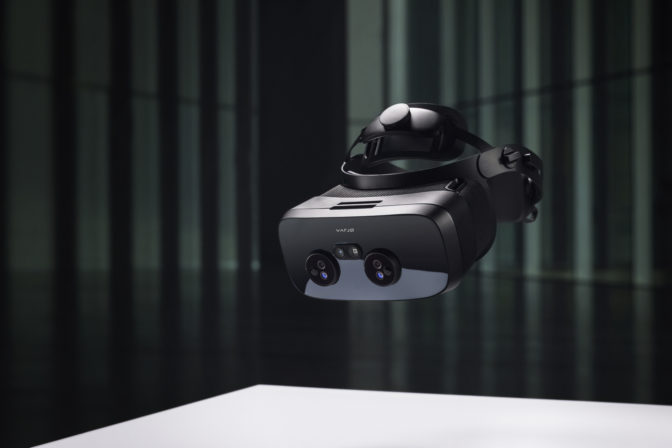
The Way forward for XR
As XR know-how advances, one other know-how is propelling customers into a brand new period: synthetic intelligence.
AI will play a serious function within the XR area, from digital assistants serving to designers in VR to clever AR overlays that may stroll people by means of do-it-yourself initiatives.
For instance, think about carrying a headset and telling the content material what to do by means of pure speech and gestures. With hands-free and speech-driven digital brokers on the prepared, even non-experts will be capable of create superb designs, full exceedingly complicated initiatives and harness the capabilities of highly effective purposes.
Platforms like NVIDIA Omniverse have already modified how customers create 3D simulations and digital worlds. Omniverse permits customers from throughout the globe to develop and function digital twin simulations. The platform gives customers with the pliability to portal into the bodily correct, totally ray-traced digital world by means of 2D screens, or their most popular XR expertise, to allow them to expertise huge digital worlds immersively.
Coming into the subsequent evolution of XR, the probabilities are nearly limitless.
What Is Spatial Computing?
Not like conventional digital experiences, that are confined to screens, spatial computing locations digital parts immediately into the bodily world, creating extra pure and intuitive interactions. The know-how combines sensors, cameras and AI-driven software program to acknowledge and reply to real-world parts, so customers can work together with digital objects as in the event that they had been tangible.
Supported by platforms like NVIDIA Omniverse, spatial computing has broad purposes, from industrial design and coaching to navigation and leisure. For instance, designers may use it to visualise 3D prototypes in actual area, or area groups may harness the know-how to obtain AR steerage overlaid onto actual tools.
As spatial computing evolves, it’s poised to reshape interactions with digital data, making it a part of on a regular basis bodily environments and increasing the probabilities for XR in sensible and inventive methods.
Be taught extra about how organizations can use NVIDIA XR applied sciences.


